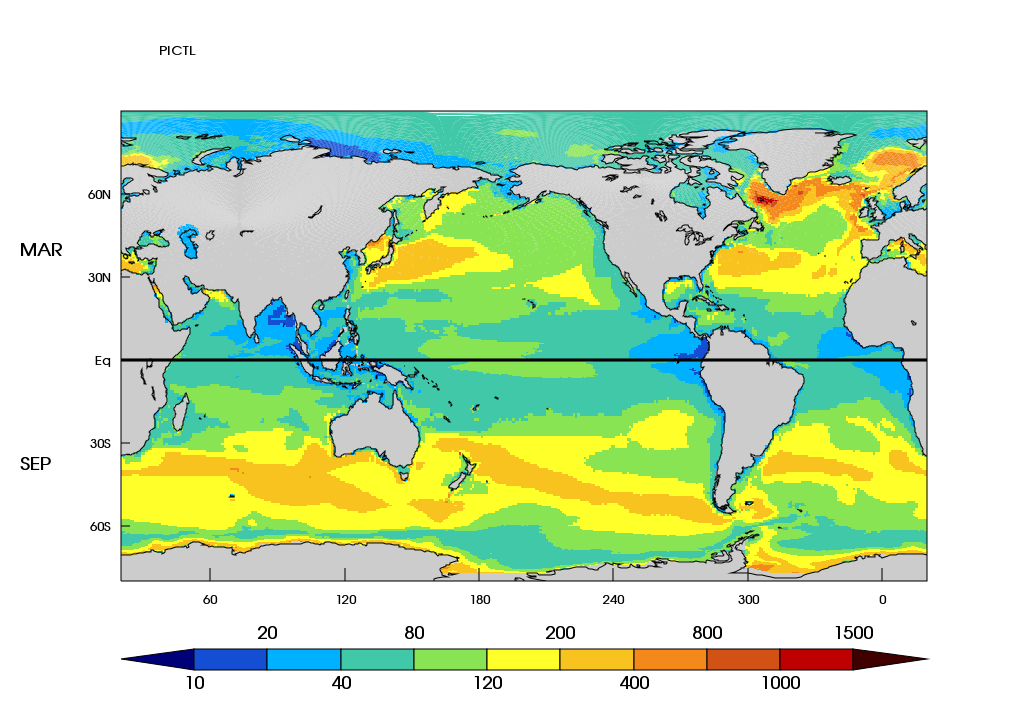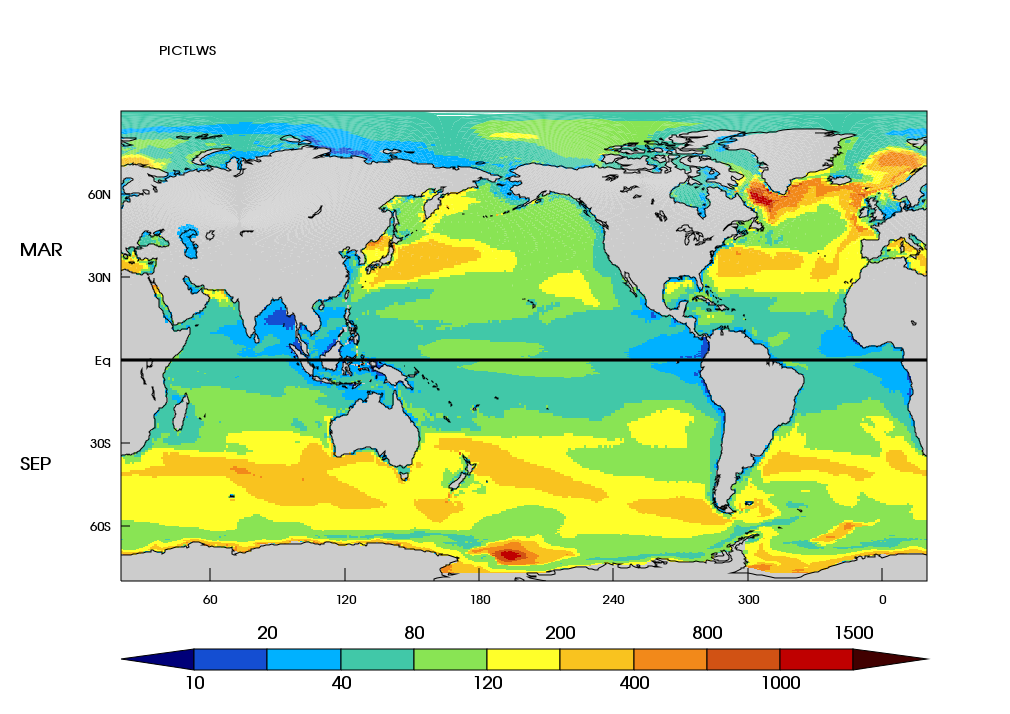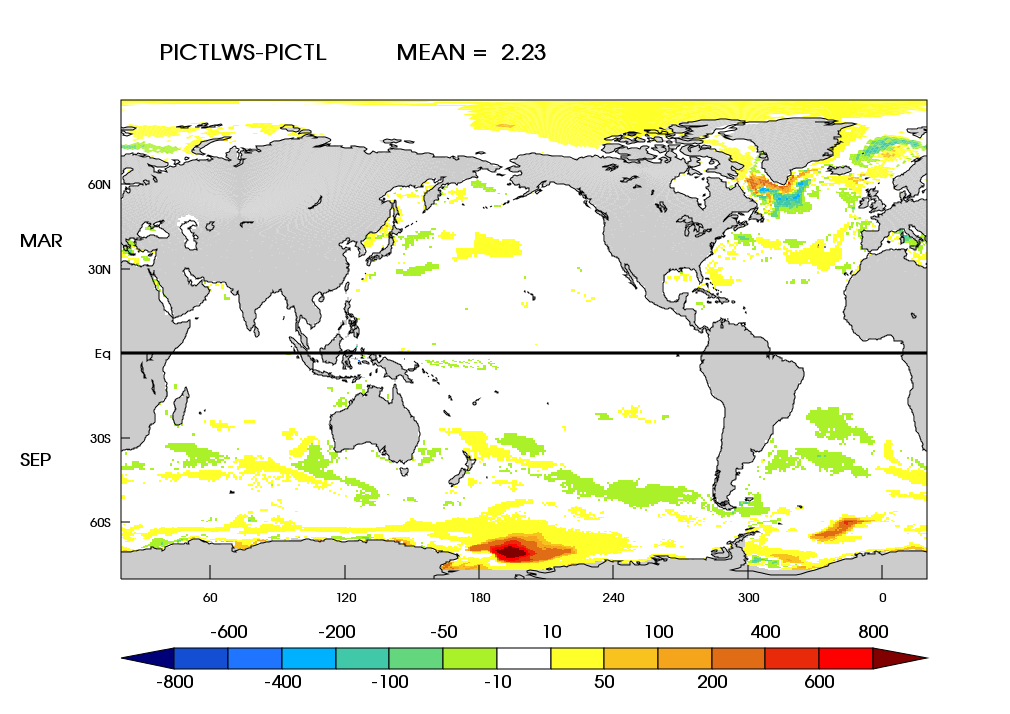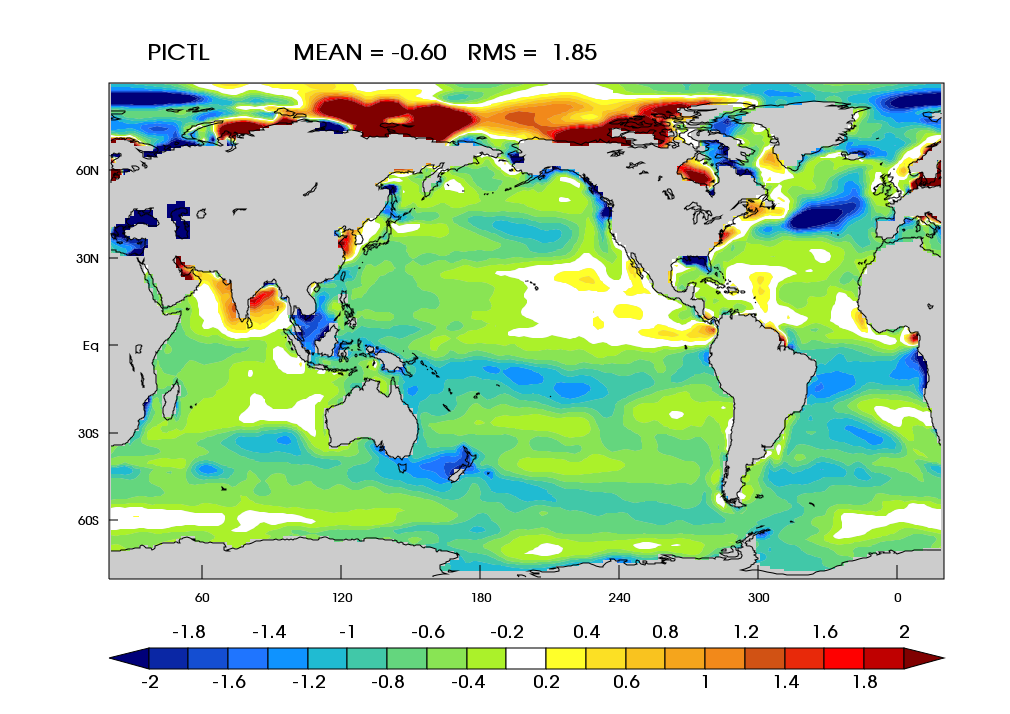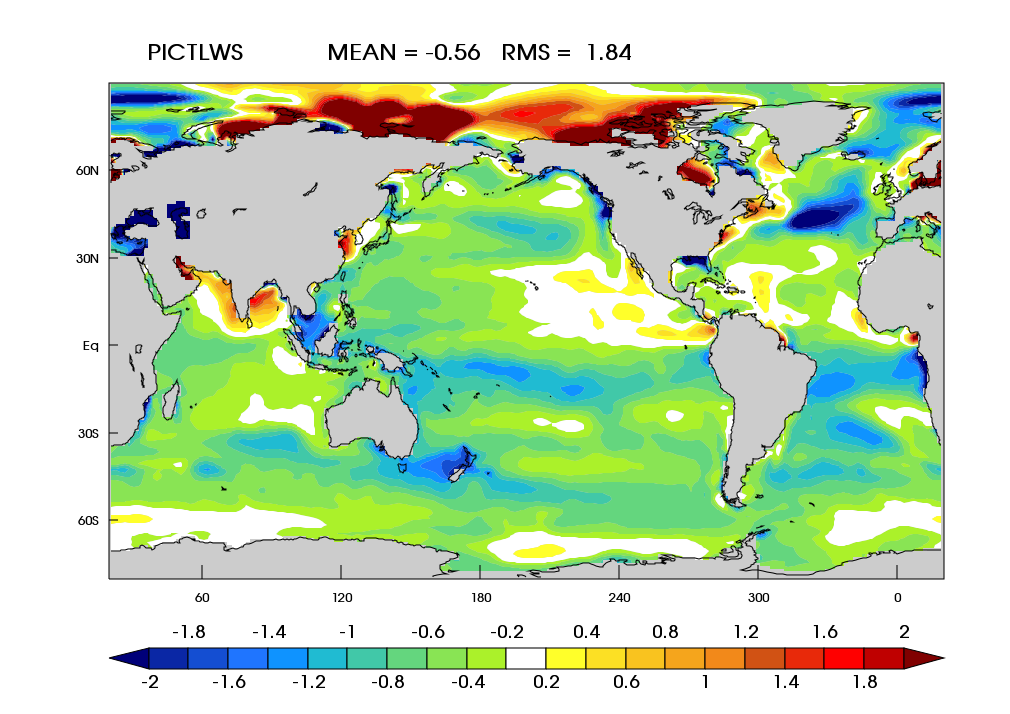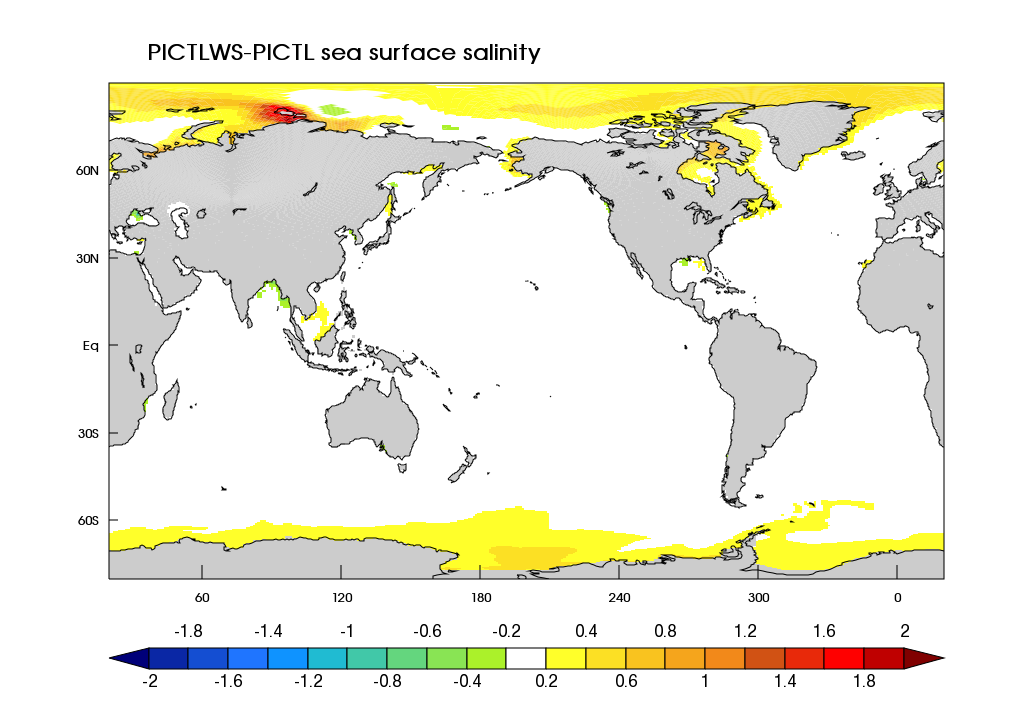The main sources of water/salt drift have been investigated. A control simulation including corrections has been run over 2250-2280 and show a reduced drift.
New formulation of salt exchange
Sources of the drifts
– Land Calving : in CNRM-CM5 a pseudo-calving over glaciers was calculated over all land grid points but only Greenland and Antarctic calving were routed to the ocean. The deficit in water for the ocean was approximately equivalent to a drift of 10cm.century in sea-level. This bug has been easily corrected via a modification in the OASIS namcouple and a change of the mask used for Greenland calving that now includes all land grid points except Antarctic (as Antarctic is considered separately in the namcouple).
– Sea Ice : the water/salt flux system of GELATO has been revised. The main problem was linked to the concept of "levitation" of sea-ice imposed by NEMO. This concept was correctly implemented for fluxes of water between sea-ice and ocean but there were bugs for the treatments of fluxes of water between snow and sea-ice.
For instance, when the sea-ice is levitating, ice water is considered as already sent to the ocean, whereas snow water is an external water reservoir. Thus when the snow is transformed into sea-ice the water flux has to be sent to the ocean (but there is no salt flux in this case, so the emps term should not be impacted). Another important bug has been found in the parameterization of snow to ice formation (where water was not properly conserved).
Notation :
NEMO terms :
emp = water flux
emps = dilution/concentration water flux
When there is no sea-ice, emps=emp
In GELATO :
emp = wio + wlo
wio = fresh water flux to the sea-ice compartment, i.e. conversion of snow to ice, sublimation, ... (wfsitsi GELATO output name)
wlo = fresh water flux to the ocean, i.e. snow melting or precipitation (wfsitso GELATO output name).
emps = emp + cio = wio + wlo + cio
cio = concentration/dilution due to a water flux between sea-ice and ocean
There are 3 types of fluxes in GELATO :
- between sea-ice and the ocean, nothing has to be sent to emp, only emps is impacted via a cio term.
- between fresh-water and the ocean, the water flux is given in wlo (same amount in emp and emps)
- between fresh-water and sea-ice, the more tricky case. In this case, the water flux is considered as sent to the ocean (for the sea-level) in wio, but there should not be any impact on the salinity of the ocean, thus cio=-wio and emps is not impacted.
New simulation
A new simulation including all these corrections has been run over 30 years restarting from January 2250 of PICTL. This new simulation is similar to PICTL, only the calving and the GELATO version have been modified. This new simulation is called PICTLWS (run on one node as PICTL1N).
Atlas of PICTLWS (compared to PICTL1N)
In the resulting experiment, the drifts are largely reduced :
| - | PICTL | PICTLWS |
| sea-level drift (cm/century) | -21 | +1.2 |
| salinity drift (psu/century) | -0.011 | +0.001 |
In PICTLWS, we observe a spin-up phase of 25 years. During this phase SST and SSS increase. We observe also a melting of snow along the Antarctic coast. Thus the drifts obtained in PICTLWS are a first approximation of what could be obtained over a longer simulation. It is expected that the sea-level drift could be reduced when snow reservoirs will be equilibrated. Due to this spin-up phase, it is not possible to exactly assess the influence of GELATO changes. However, as the change in calving results in reducing the sea-level drift by 0.95cm.century, the impact of the corrections in GELATO are of the same magnitude.
From the Atlas, we observe that the atmospheric climate is weakly impacted by the corrections, more differences can be seen in the ocean. The atmospheric global energy budget is not impacted. The main change is a warming of the low level temperature around the Antarctic. This warming is consecutive to a reduction in sea-ice cover over the Antarctic. Polar water are saltier in the new simulation and mixed layer depth increase drastically in some regions around the Antarctic (as can be seen on the following figures). Following these results, D. Salas will propose a new GELATO version which will maintain more sea-ice over the Antarctic.
Mixed layer depth
Surface salinity anomaly to EN3 data + difference PICTLWS - PICTL
To run this version
In the param file, you just have to change the OCEEXE and ICENAMREF parameters :
OCEEXE=~mrgu556/opa/opa9/NEMO3.3/bin/nemo3.3_o1.5.30.w.v10.6_d.2P.CPL
ICENAMREF=~mrgu556/couple/namelists/namgel_ar5.s4.dyncor
NB : the NEMO binary indicated here is for NEMO on 2 procs (as in PICTL1N). If you want to change the number of procs for NEMO, you have to recompile NEMO v10.6 and link it to GELATO 5.30.w in mrgu556 GELATO directory (not in mrgu552 !) -cf page NEMO compil-.
New formulation of salt exchange
Originally, there is no direct exchange of salt between NEMO and the sea-ice model but an exchange of freshwater that modifies the salinity. As in GELATO the salt is properly conserved in kg, it is not realistic to exchange this concentration/dilution flux. We have thus introduced in NEMO the possibility to exchange salt in kg, following G. Madec guides. The new version CNRM-CM5.2 uses this flux. The parameter file for this new version of the model can be found on tori : mrgu556/param/AR5/param_CPICTL for a control run.

